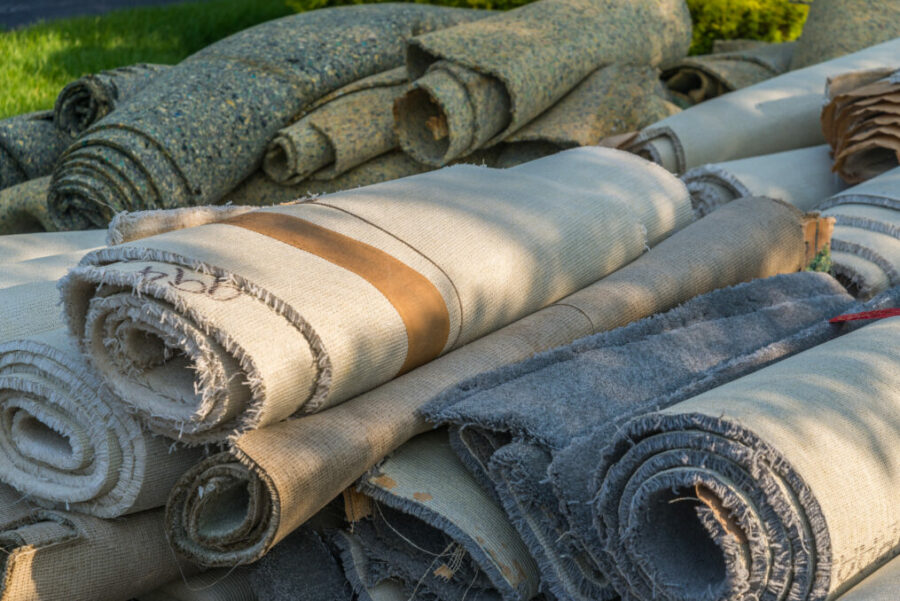How to Remove Water from Carpet After Flooding
Flooding, whether from a burst pipe, a leaky roof, or a natural disaster, is a devastating event for any homeowner. The sight of soaked carpet can be disheartening, and the clock starts ticking the moment the water arrives.
Immediate and effective water removal from carpet is crucial to prevent permanent damage, mold growth, and a lingering musty odor. Learn tips on how to remove water from carpet yourself while you wait for the professionals (depending on the size of the damage).

The Urgency of Water Removal from Carpet
Time is of the essence when dealing with water-damaged carpets. Mold and mildew can begin to grow in as little as 24 to 48 hours. The longer the carpet remains wet, the greater the risk of:
- Mold and Mildew Growth: The warm, moist environment of a flooded carpet is a perfect breeding ground for mold, which can cause health issues and a persistent musty smell.
- Structural Damage: Water can seep through the carpet and padding to damage the subfloor, potentially compromising the structural integrity of your home.
- Delamination: The bond between the carpet fibers and the backing can weaken, causing the carpet to separate and delaminate.
- Lingering Odors: Even after the carpet appears dry, a musty odor can remain if all moisture isn’t thoroughly removed.
Step-by-Step DIY Water Removal from Carpet
If the flooding is minor and from a clean water source, you may be able to start the process yourself.
1. Act Immediately and Ensure Safety
- Turn off the Power: Before you do anything else, turn off the electricity to the affected area to prevent electrical hazards.
- Find the Source: Identify the source of the water and stop it. This is a critical first step to prevent further flooding.
- Move Furniture: Remove all furniture and belongings from the wet carpet to a dry area. This prevents further water absorption and allows you to access the entire affected area.
2. Extract the Water
- Use a Wet-Dry Vacuum: This is the most effective tool for extracting a large amount of water. Work slowly, passing the nozzle over each area to ensure maximum suction.
- Towels and Pressure: For smaller areas, you can use dry towels. Lay them over the wet spot and apply pressure by walking on them. Replace the towels once they are saturated.
3. Promote Air Circulation and Dehumidification
- Open Windows and Doors: If the weather permits and the outside humidity is lower than inside, open windows and doors to increase air circulation.
- Use Fans: Position powerful fans (air movers) strategically to blow air directly onto the wet carpet. This speeds up evaporation.
- Utilize a Dehumidifier: A dehumidifier is an invaluable tool for removing moisture from the air, which is essential for proper drying. Rent or purchase a high-capacity unit and run it continuously.
4. Address the Carpet Padding
- The Carpet Pad is a Sponge: The padding underneath your carpet acts like a giant sponge. In most cases of significant flooding, it’s very difficult to dry the padding thoroughly, and it’s a prime location for mold growth.
- Removal is Key: It is often recommended to remove and dispose of the wet padding. You can carefully peel back the carpet from the tack strips along the wall to access the padding and replace it once the subfloor is dry.
When to Call the Professionals at Technique Flooring
While DIY methods can be a good first response, there are many situations where professional help is not just recommended, but essential.
- Extensive Flooding: If the flood damage is extensive, a shop vac simply won’t be enough. Professional restoration companies have industrial-grade water extraction and drying equipment.
- Contaminated Water: If the water is from a sewage backup or other unsanitary source (Category 2 or 3 water), the carpet is considered a biohazard. It must be professionally removed and disposed of, and the subfloor must be sanitized. Do not attempt to handle this yourself.
- Prolonged Wetness: If the carpet has been wet for more than 48 hours, the likelihood of mold growth is extremely high. Professionals have the tools and expertise to properly remediate mold and ensure the subfloor is safe.
- DIY Uncertainty: If you’re unsure about the process, the level of contamination, or if the subfloor is also damaged, it’s always safer and more cost-effective in the long run to call a professional.

Technique Flooring & Restoration’s Flood & Water Damage Experts at On-Call 24/7!
Facing a flood can be overwhelming, but a quick and effective response is key to saving your carpet and your home. While initial steps can be taken on your own, knowing when to call in an expert is the most important part of the process.
Need urgent help with water damage? Contact Technique Flooring & Restoration now for 24/7 emergency services. Our IICRC-certified technicians bring expert knowledge and a 100% satisfaction guarantee to every job. As Central Texas’s voted “Best” flooring and carpet cleaning company for over a decade, our mission is to deliver astounding results for your home or business.
